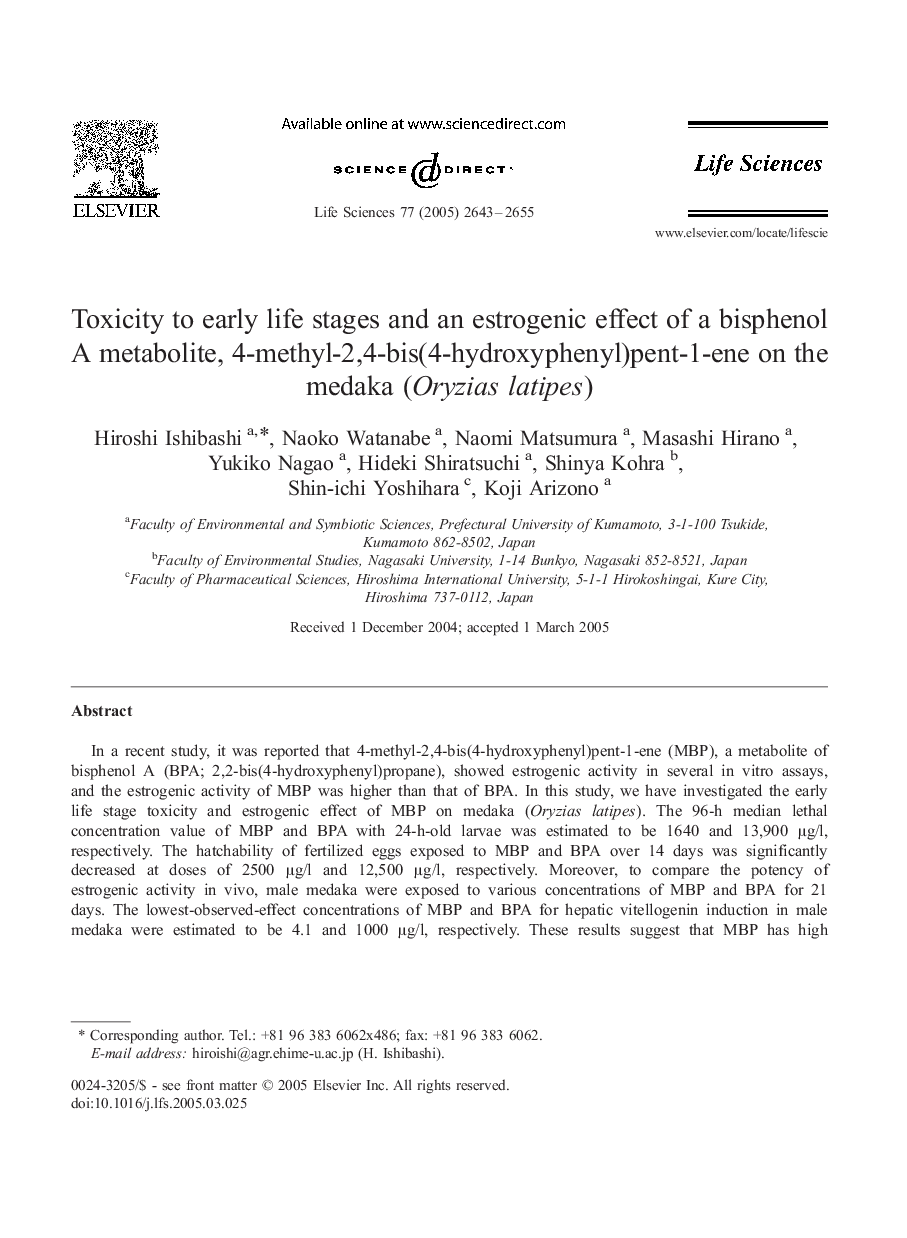| Article ID | Journal | Published Year | Pages | File Type |
|---|---|---|---|---|
| 2554938 | Life Sciences | 2005 | 13 Pages |
In a recent study, it was reported that 4-methyl-2,4-bis(4-hydroxyphenyl)pent-1-ene (MBP), a metabolite of bisphenol A (BPA; 2,2-bis(4-hydroxyphenyl)propane), showed estrogenic activity in several in vitro assays, and the estrogenic activity of MBP was higher than that of BPA. In this study, we have investigated the early life stage toxicity and estrogenic effect of MBP on medaka (Oryzias latipes). The 96-h median lethal concentration value of MBP and BPA with 24-h-old larvae was estimated to be 1640 and 13,900 μg/l, respectively. The hatchability of fertilized eggs exposed to MBP and BPA over 14 days was significantly decreased at doses of 2500 μg/l and 12,500 μg/l, respectively. Moreover, to compare the potency of estrogenic activity in vivo, male medaka were exposed to various concentrations of MBP and BPA for 21 days. The lowest-observed-effect concentrations of MBP and BPA for hepatic vitellogenin induction in male medaka were estimated to be 4.1 and 1000 μg/l, respectively. These results suggest that MBP has high toxicity for early life stages of the medaka, and that the estrogenic activity of MBP was about 250-fold higher than that of BPA to male medaka.
